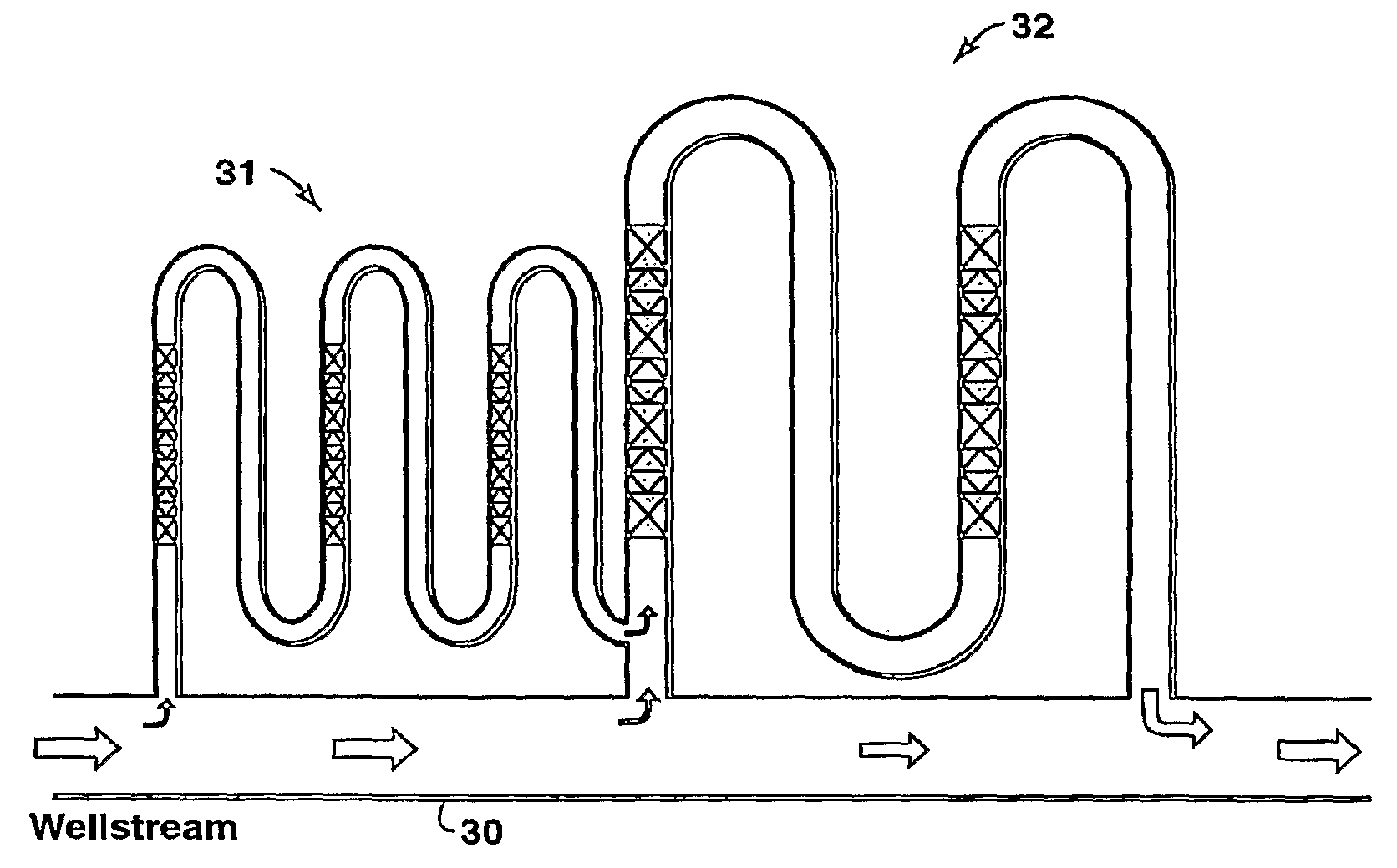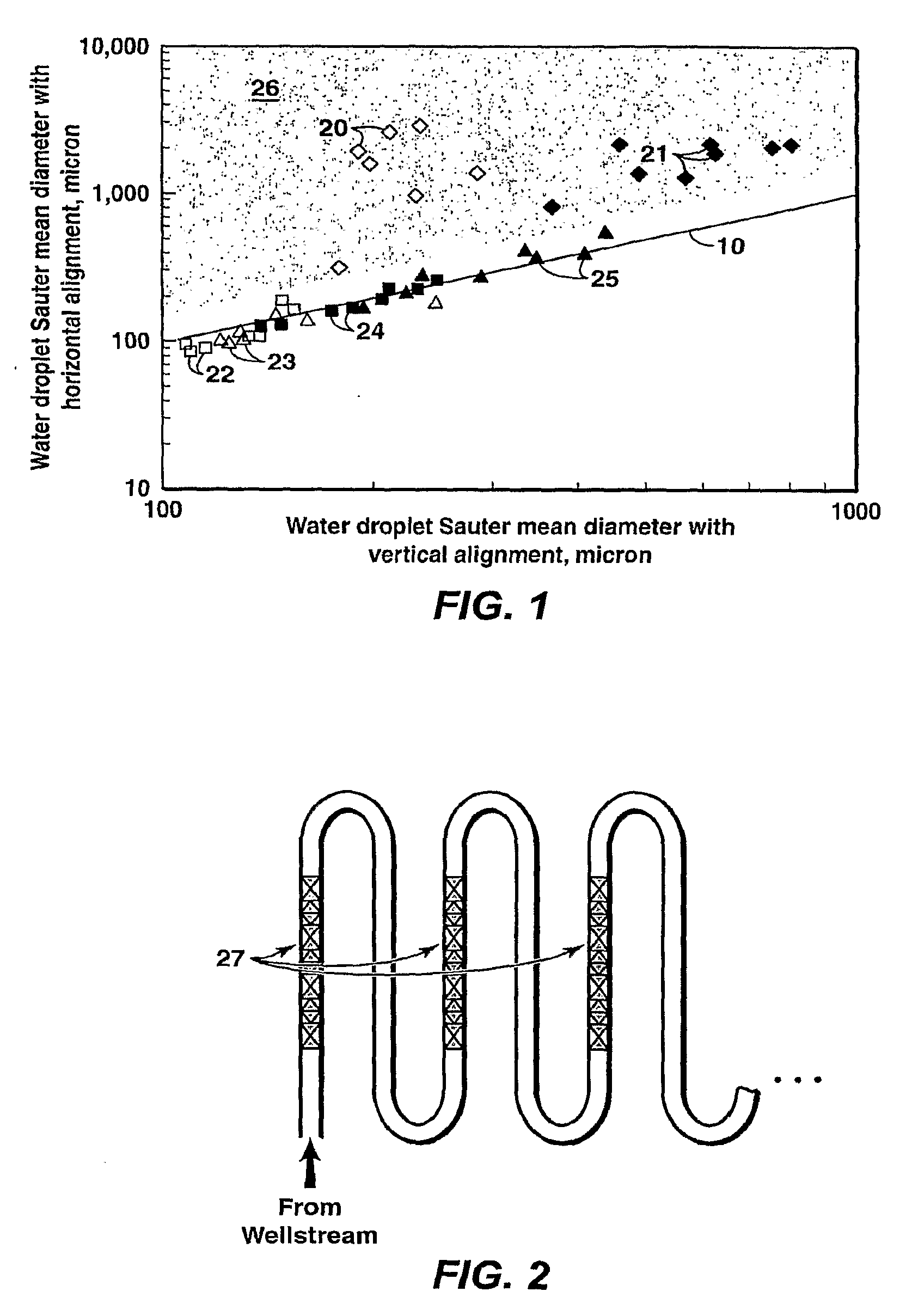Method of Generating a Non-Plugging Hydrate Slurry
a technology of hydrate slurry and hydrate, which is applied in the direction of sealing/packing, borehole/well accessories, insulation, etc., can solve the problems of natural gas hydrates in transportation pipelines and equipment, costly and time-consuming procedures, and the need for restoring flow, so as to reduce the droplet size of said water and increase the fluid viscosity
- Summary
- Abstract
- Description
- Claims
- Application Information
AI Technical Summary
Benefits of technology
Problems solved by technology
Method used
Image
Examples
Embodiment Construction
[0050]In the following detailed description, the specific embodiments of the present invention are described in connection with its preferred embodiments. However, to the extent that the following description is specific to a particular embodiment or a particular use of the present techniques, it is intended to be illustrative only and merely provides a concise description of the exemplary embodiments. Accordingly, the invention is not limited to the specific embodiments described below, but rather; the invention includes all alternatives, modifications, and equivalents falling within the true scope of the appended claims.
[0051]The present invention provides the use of dry hydrates and solidifying wax in a way that does not present problems associated with prior art teachings. The present invention also provides methods of seeding and / or making of dry hydrates without the aid of chemicals and with minimum use of rotating or other energized equipment.
[0052]The present invention is fu...
PUM
 Login to View More
Login to View More Abstract
Description
Claims
Application Information
 Login to View More
Login to View More - R&D
- Intellectual Property
- Life Sciences
- Materials
- Tech Scout
- Unparalleled Data Quality
- Higher Quality Content
- 60% Fewer Hallucinations
Browse by: Latest US Patents, China's latest patents, Technical Efficacy Thesaurus, Application Domain, Technology Topic, Popular Technical Reports.
© 2025 PatSnap. All rights reserved.Legal|Privacy policy|Modern Slavery Act Transparency Statement|Sitemap|About US| Contact US: help@patsnap.com



